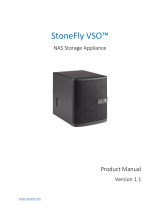
Closing the RAID Controller Module........................................................................................................................ 23
RAID Controller Module Backup Battery Unit ............................................................................................................. 23
Removing the RAID Controller Module Backup Battery Unit ..............................................................................23
Installing the RAID Controller Module Backup Battery Unit................................................................................. 24
Power Supply or Cooling Fan Module........................................................................................................................... 24
Removing a Power Supply or Cooling Fan Module................................................................................................24
Installing a Power Supply or Cooling Fan Module..................................................................................................25
Control Panel.................................................................................................................................................................... 26
Removing the Control Panel.....................................................................................................................................26
Installing the Control Panel....................................................................................................................................... 27
Backplane..........................................................................................................................................................................28
Removing the Backplane.......................................................................................................................................... 28
Installing the Backplane.............................................................................................................................................29
4 Troubleshooting Your System.......................................................................................................................30
Safety First—For You and Your System....................................................................................................................... 30
Troubleshooting Storage Array Startup Failure............................................................................................................ 30
Troubleshooting Loss of Communication......................................................................................................................30
Troubleshooting External Connections...........................................................................................................................31
Troubleshooting Power Supply or Cooling Fan Modules..............................................................................................31
Troubleshooting Array Cooling Problems....................................................................................................................... 31
Troubleshooting Expansion Enclosure Management Modules................................................................................... 32
If EMM Status LED is Blinking Amber at Five Times per Sequence .................................................................. 32
If the EMM Status LED is Solid or Blinking Amber at Two or Four Times per Sequence.................................32
If the Link Status LEDs are not Green.....................................................................................................................32
Troubleshooting RAID controller modules..................................................................................................................... 32
If the Array Status LED is Solid or Blinking Amber.................................................................................................33
If the Link Status LEDs are not Green.....................................................................................................................33
Troubleshooting Physical Disks.......................................................................................................................................33
Troubleshooting Array and Expansion Enclosure Connections...................................................................................34
Troubleshooting a Wet System.......................................................................................................................................34
Troubleshooting a Damaged System............................................................................................................................. 35
Controller failure conditions............................................................................................................................................ 35
Critical conditions.......................................................................................................................................................35
Noncritical conditions................................................................................................................................................36
Invalid Storage Array..................................................................................................................................................36
ECC Errors..................................................................................................................................................................36
PCI errors....................................................................................................................................................................36
5 Technical Specications...............................................................................................................................37
6 Getting help.................................................................................................................................................40
Locating your system Service Tag................................................................................................................................. 40
Contacting Dell.................................................................................................................................................................40
Documentation feedback................................................................................................................................................40
4
Contents




















